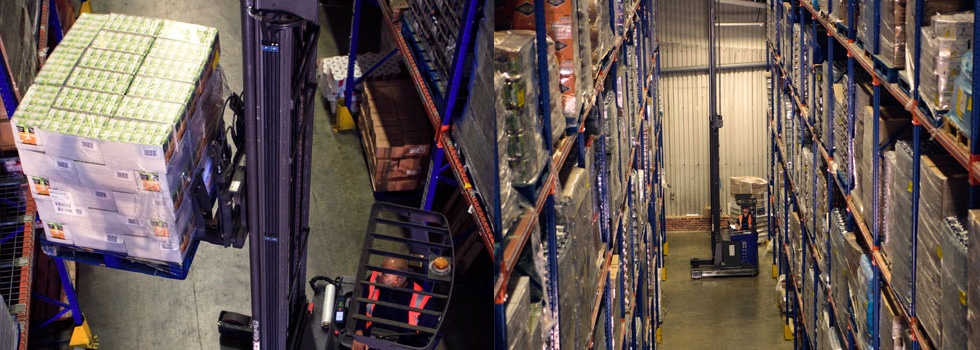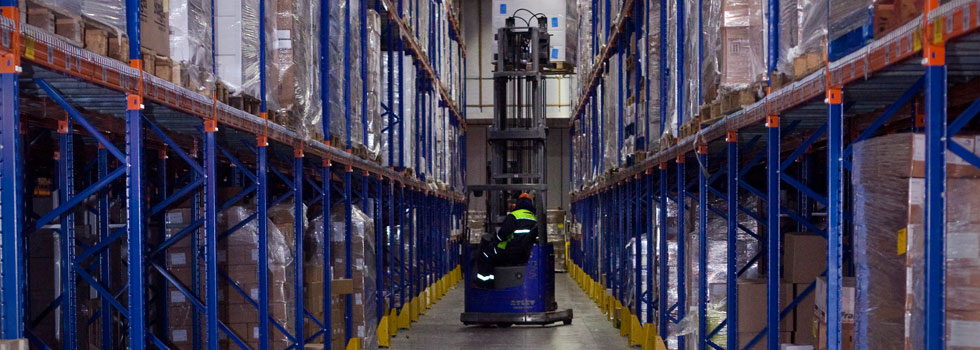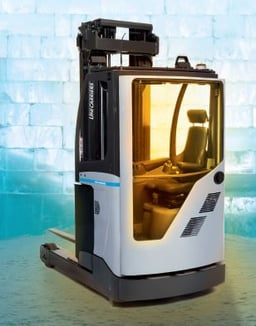
Cold store operations are one of the toughest material handling challenges. Not only do the sub-zero temperatures affect your trucks’ battery capacity, electronics, lubrication, bodywork and drivers’ ability to operate the truck, the need for high storage density can reduce selectivity and throughput.
However, there are solutions which make it possible to operate trucks reliably, efficiently and safely in these extreme environments.
Optimising truck performance

Very cold temperatures reduce a truck’s battery capacity by about 1 per cent per degree below 20°C. They might also disturb the truck's electronics, make the oil thicker and more viscous, and make the metal (especially the welding joints) more brittle.
For these reasons, you need to be sure your truck is capable of withstanding these conditions before you put it to work. Fortunately, all UniCarriers trucks are designed to perform optimally in tough conditions. They need no modifications for chill store operations, but in cold store operations with temperatures down to -35°C, some adaptations will be needed to achieve efficiency, reliability and safety. UniCarriers steel quality and welding techniques can also ensure that vital components will remain reliable at such low temperatures.
Avoiding condensation problems
Operating trucks reliably in extremely low temperatures can be achieved with some modifications, but problems start to arise when the trucks constantly move from the frozen environment out into ambient temperatures and then back again. Frozen metal components will expand when warmed up, which can create problems when moisture from the atmosphere refreezes when the truck returns to the cold store.
Condensation is perhaps the biggest technical issue for your cold store operations. At temperatures below the dew point of 6°C, the truck will be affected. If you have seen a truck coming out of a cold store and grow whiter from frost, it’s easy to understand how this can cause all sorts of problems. Outside of the cold store, the frost melts into water, and when the truck re-enters the cold store the water will freeze to ice. If this happens repeatedly, a thick ice coating will cover parts of the truck and could cause component damage.
Some measures can be taking to reduce the risk of this happening to your cold store trucks:
- Keep the truck in the cold store. When changing batteries, bring the battery to the truck and not the truck to the battery. If you must leave the cold store, stay outside long enough to allow the truck to dry completely. This time can be shortened by blowing hot air over the truck with large ventilators.
- If you frequently drive in and out of the cold store, ensure your time spent inside the cold store is as short as possible, and time outside as long as possible, so that the temperature of the truck never goes below 0°C.
- If this is difficult, do the opposite — spend as much time as possible inside and as little time as possible outside. The idea here is that the temperature of the truck never goes above 0°C

Heated cabins
Wearing lots of thick clothes can keep the driver warm, but it also restricts their movement. It also makes it harder for them to interpret driving and lifting feedback. Many forklifts, such as the trucks in the UniCarriers Tergo® series, are available with specially designed heated cabins to help improve ergonomics and operator efficiency in cold store.Another cold store challenge is keeping the operator warm. The extreme low temperatures of the cold store can be very dangerous for the driver if they are not properly protected.
These heaters can keep the driver warm and safe in the arctic conditions of the cold store, without the need for lots of insulating clothes.
Do you want to know more about our experience in cold store operations? Click here to get in touch via our contact form. Alternatively, if you want to know more about the different types of warehouse storage systems, and the benefits and drawbacks of each, click the blue button below. Whether you operate a cold store or not, the free guide could help give you the knowledge you need to a materials handling operation effectively.







































Comment